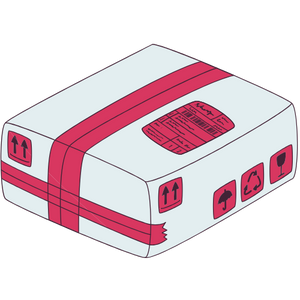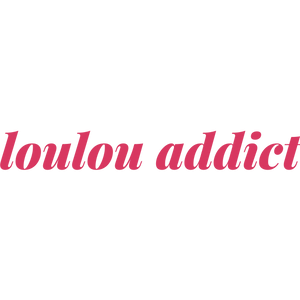2/4 The Menstrual Cycle. The Follicular Phase

After covering menstruation last week, let’s continue exploring the menstrual cycle. This time, let’s focus on the follicular phase. The menstrual cycle has several phases: the follicular phase, the ovulatory phase (or ovulation), and the luteal phase. Your period is part of the follicular phase. Since your period is such an important event in the hormonal cycle, we decided to dedicate a separate article to it. However, the follicular phase isn’t just about menstruation.
What’s happening in our bodies at this point in the cycle? Can you feel certain symptoms? What is the follicular phase for? What does “follicular” mean?
Louloucup continues to break down the female cycle for you. We believe it’s essential to know everything that’s happening in your body. It’s key to self-awareness, understanding, easing doubts and worries—in short, to living your daily life as a woman more fully!
In this article:
I - The follicular phase of the menstrual cycle
Let’s continue our exploration of the menstrual cycle. The female cycle is a repetitive process that occurs over and over again. It constantly restarts, with the goal of preparing a woman’s body for a potential pregnancy.
The menstrual cycle consists of several phases. It’s commonly said that a cycle lasts 28 days, but in reality, it varies. That’s normal. It’s never exact or precise. It can be a little shorter (25 days) or a bit longer (35 days). No matter the length, the follicular phase is at the beginning of the cycle and usually covers the first fourteen days.
Fourteen days is about half of the female hormonal cycle. These fourteen days always start with menstruation and always end with ovulation, which is another phase of the cycle. The duration also varies from woman to woman, from cycle to cycle. On average, periods last about a week, between 3 and 6 days. Remember: a hormonal cycle always starts on the first day of your period. With your period comes a new cycle and a new follicular phase.

II - Questions & answers about the follicular phase
✤ What happens during the follicular phase?
During the follicular phase, the endometrium is shed because fertilization did not occur in the previous cycle. In other words, this is when your period or menstrual bleeding happens. This is due to low levels of estrogen and progesterone. At the end of your period, the cycle starts up all over again.
The follicular phase is also called the pre-ovulatory phase. Basically, everything is being prepared for ovulation, which typically occurs around day 14 of the cycle.
The hypothalamus releases a hormone called GnRH. This, in turn, stimulates the pituitary gland (another gland in the brain). The pituitary then secretes FSH, a hormone essential for stimulating the follicles.
Your ovaries contain many follicles from birth, each holding an oocyte. You can think of a follicle as a little sac. When FSH is released, these follicles wake up and become active. Only one will stand out and mature—the dominant follicle, also known as the Graafian follicle. It releases an egg that is ready to be fertilized. This marks the end of the follicular phase and the beginning of ovulation.
The mature follicle produces estrogen, which starts preparing the uterus for a possible pregnancy. Estrogen levels peak about 24 hours before ovulation.
✤ How long does the follicular phase last?
On a typical 28-day cycle, the follicular phase normally lasts 14 days. However, it’s the phase of the menstrual cycle that can vary the most. It may be longer or shorter, which is why it can be hard for some women to know exactly when they’re ovulating (and therefore hard to get pregnant). In perimenopause, the follicular phase tends to get shorter.
Doctors consider a follicular phase short if it lasts less than 10 days. In this case, the released egg hasn’t had time to fully mature.
On the other hand, a follicular phase is considered long if it lasts more than 25 days. In this case, cycles are longer. Women with long follicular phases have fewer ovulation windows per year than women with a typical 28-day cycle. PCOS is one possible reason, among others.
✤ What symptoms might you experience during the follicular phase?
You might feel a wide range of emotions during this phase. When you have your period, you may feel very tired or experience varying degrees of pain in your lower abdomen or lower back.
Not all women experience these symptoms. And it can change from one cycle to the next.
Once your period is over, you feel lighter. You have more energy, you’re in a good mood, and full of positive vibes. Your estrogen level gradually rises over the days, which is normal.
This is truly the calmest and most positive time of your cycle. No pain, no PMS, no bad mood. No cravings, you’re motivated to work out, and you can stay more focused on your tasks.

✤ Can you get pregnant during the follicular phase?
This isn’t the most fertile phase of your cycle, but be careful—ovulation can happen earlier than expected. Always remember it’s important to use protection at any point in your cycle if you’re not trying to get pregnant.
3 Louloucup products you absolutely need! 🤩
✤ What problems can occur during the follicular phase?
As you’ve probably gathered, the follicular phase refers to the process of forming a viable, reliable, and fertilizable oocyte. However, this process can be full of obstacles.
The follicular phase can be compromised if there’s a failure in the brain glands, the pituitary and hypothalamus. If the hormonal secretion necessary for proper follicle development doesn’t occur or is insufficient, the process is disrupted.
PCOS, which we’ve already discussed, is the leading cause of infertility worldwide. The follicular phase can also be affected by stress, jet lag, significant weight loss or gain, or early menopause.
Whatever the issue, it’s important to talk to a qualified healthcare professional. There are solutions to better manage your menstrual cycle.
 Don’t forget to pin this article 😉
Don’t forget to pin this article 😉


































